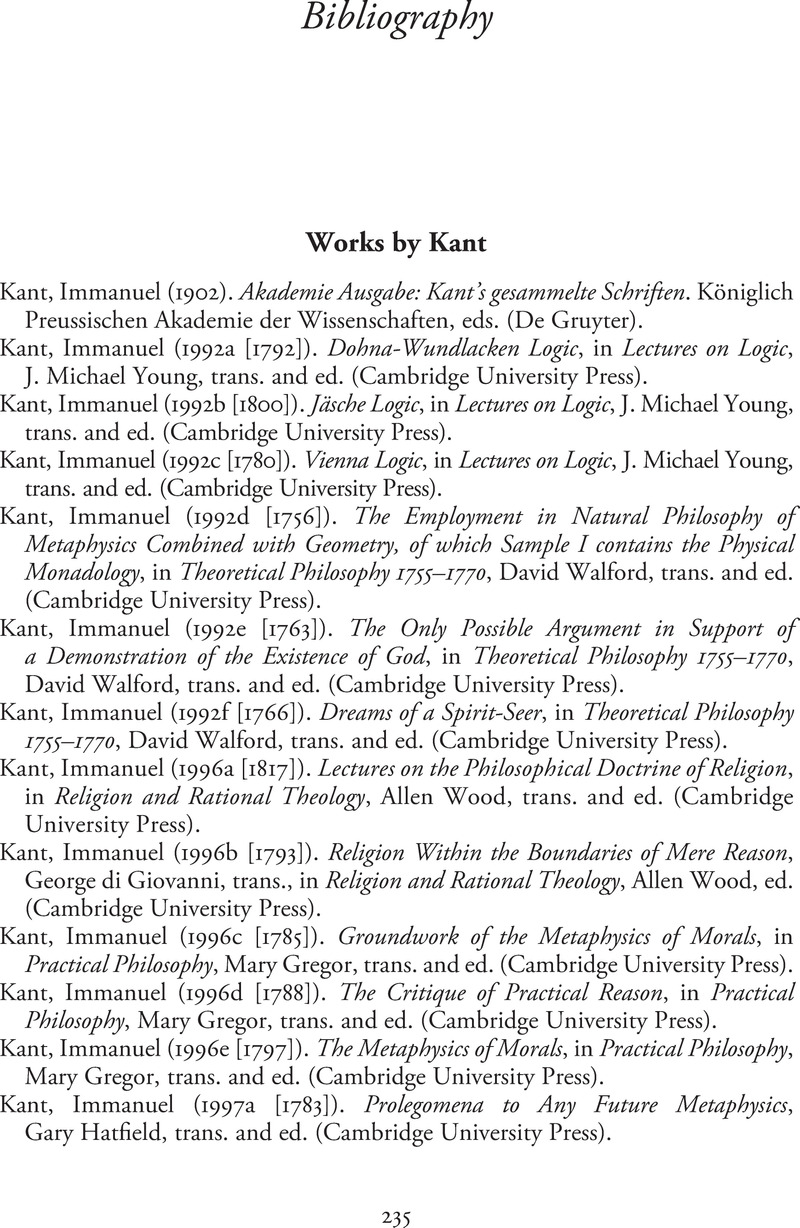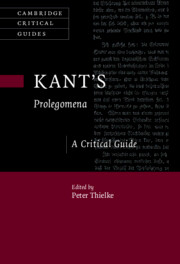Book contents
- Kant’s Prolegomena
- Cambridge Critical Guides
- Kant’s Prolegomena
- Copyright page
- Contents
- Contributors
- Abbreviations
- Introduction
- Chapter 1 Humor, Common Sense and the Future of Metaphysics in the Prolegomena
- Chapter 2 Is Metaphysics Possible? The Argumentative Structure of the Prolegomena
- Chapter 3 From ‘Facts’ of Rational Cognition to Their Conditions: Metaphysics and the ‘Analytic’ Method
- Chapter 4 Transcendental Idealism in the Prolegomena
- Chapter 5 Judgments of Experience and the Grammar of Thought
- Chapter 6 The Beach of Skepticism: Kant and Hume on the Practice of Philosophy and the Proper Bounds of Skepticism
- Chapter 7 The Boundary of Pure Reason
- Chapter 8 Kant’s Argument Against Psychological Materialism in the Prolegomena
- Chapter 9 The Marriage of Metaphysics and Geometry in Kant’s Prolegomena
- Chapter 10 Kant’s ‘As If’ and Hume’s ‘Remote Analogy’: Deism and Theism in Prolegomena §§57 and 58
- Chapter 11 Cognition by Analogy and the Possibility of Metaphysics
- Bibliography
- Index
- Cambridge Critical Guides
- References
Bibliography
Published online by Cambridge University Press: 08 October 2021
- Kant’s Prolegomena
- Cambridge Critical Guides
- Kant’s Prolegomena
- Copyright page
- Contents
- Contributors
- Abbreviations
- Introduction
- Chapter 1 Humor, Common Sense and the Future of Metaphysics in the Prolegomena
- Chapter 2 Is Metaphysics Possible? The Argumentative Structure of the Prolegomena
- Chapter 3 From ‘Facts’ of Rational Cognition to Their Conditions: Metaphysics and the ‘Analytic’ Method
- Chapter 4 Transcendental Idealism in the Prolegomena
- Chapter 5 Judgments of Experience and the Grammar of Thought
- Chapter 6 The Beach of Skepticism: Kant and Hume on the Practice of Philosophy and the Proper Bounds of Skepticism
- Chapter 7 The Boundary of Pure Reason
- Chapter 8 Kant’s Argument Against Psychological Materialism in the Prolegomena
- Chapter 9 The Marriage of Metaphysics and Geometry in Kant’s Prolegomena
- Chapter 10 Kant’s ‘As If’ and Hume’s ‘Remote Analogy’: Deism and Theism in Prolegomena §§57 and 58
- Chapter 11 Cognition by Analogy and the Possibility of Metaphysics
- Bibliography
- Index
- Cambridge Critical Guides
- References
Summary

- Type
- Chapter
- Information
- Kant's ProlegomenaA Critical Guide, pp. 235 - 247Publisher: Cambridge University PressPrint publication year: 2021



